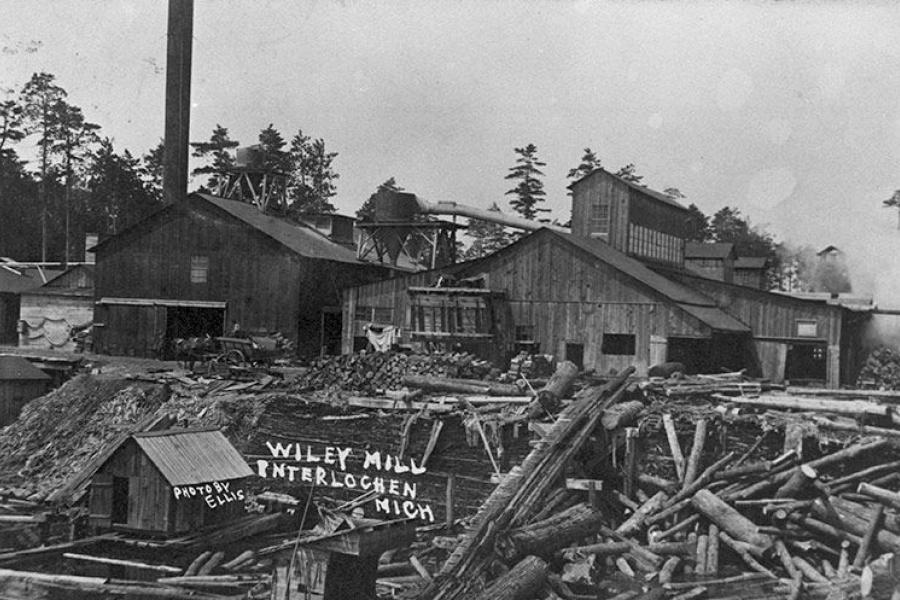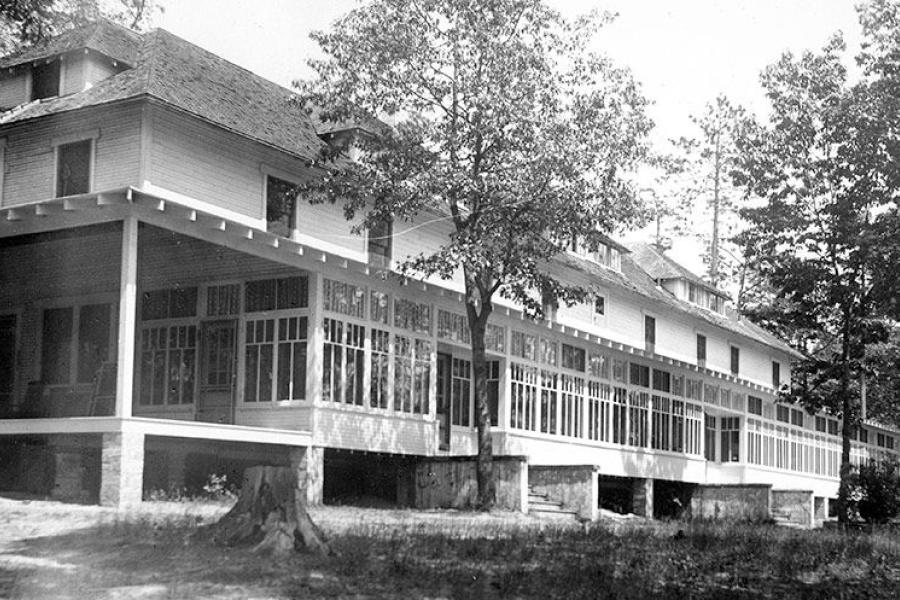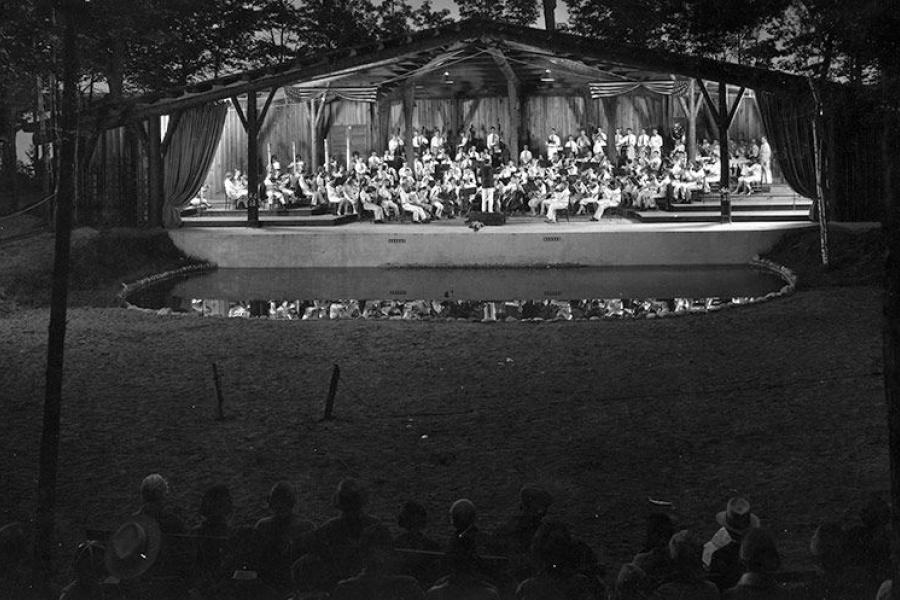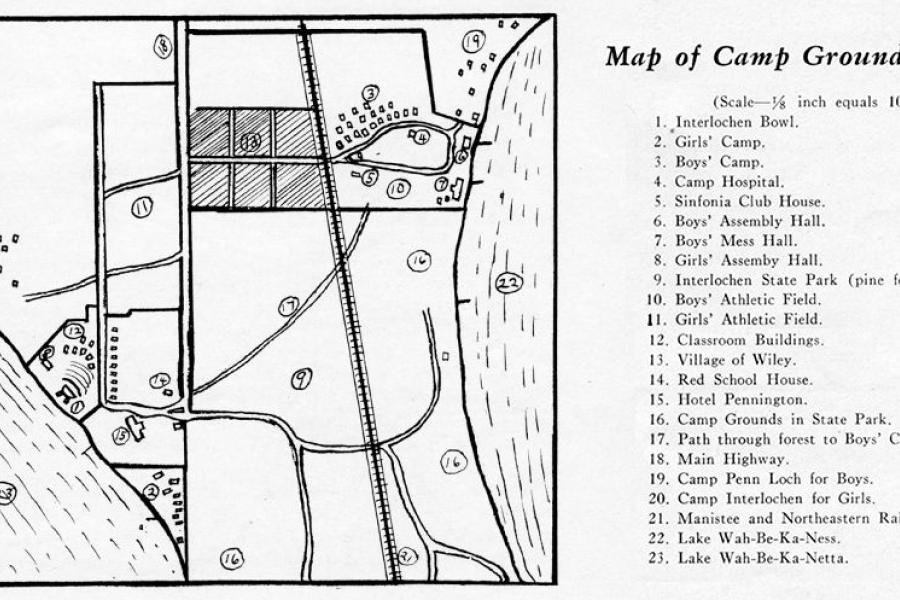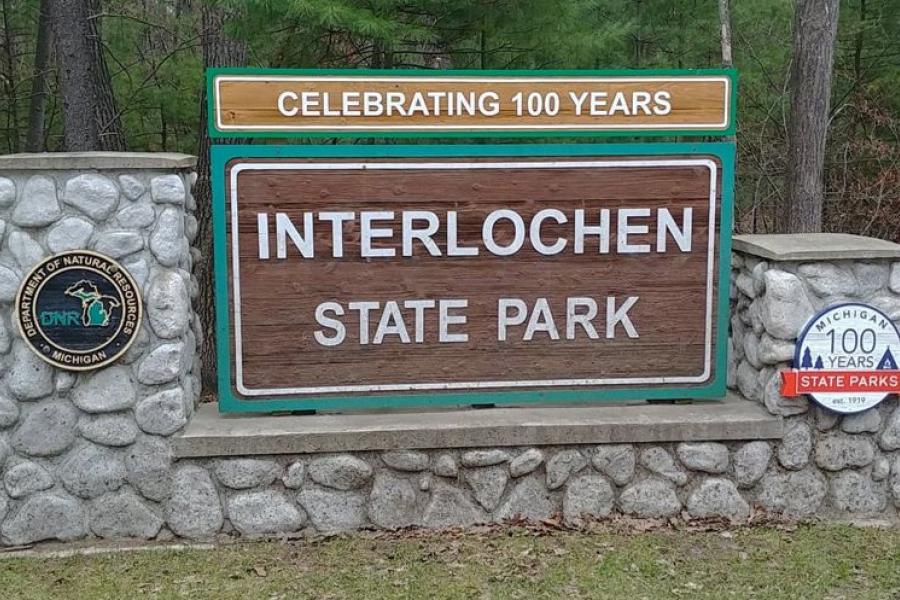Interlochen Online's next session begins May 6—enroll in any course or certificate program now.
From timber to tourism: How conservation shaped Interlochen, Michigan
The establishment of Interlochen State Park paved the way for the formation of Interlochen Center for the Arts.
Interlochen, Michigan should have been a boom town.
Starting in the 1870s, several lumber barons turned their attention towards what is now Green Lake Township. Within decades, Interlochen, Michigan had two railways, a factory, a mill, and all the amenities one would expect to find in a proper town.
It wasn’t long before the lush natural resources of the area began to dry up. The once-dense “green gold” forests of virgin pines were now vast plains of stumps and dirt. Businesses closed, workers moved on, and the city’s fate seemed all but sealed—destined to go the way of countless lumber towns before it.
Deforestation would have been the end if it hadn’t been for area entrepreneurs, who had the foresight and ingenuity to pivot the town’s appeal from timber into tourism.
In the 1800s, early American conservationists such as President Theodore Roosevelt, naturalist John Muir, and author Henry David Thoreau helped kindle a nationwide interest in preserving wilderness areas for public use and recreation.
Seeing the potential of this trend, The Buckley & Douglas Lumber Company spared 200 acres of untouched forests along the shores of Interlochen’s two twin lakes: Duck Lake (originally known as Lake Wahbekaness) and Green Lake (originally Lake Wahbekanetta). The result was Pine Park, a public retreat boasting virgin forests and pristine lakes.
Visitors began flocking to the region during the warmer months to camp, fish, boat, and escape the heat of the crowded cities. The railways that once moved lumber now brought vacationers to and from northern Michigan.
Piggybacking on the vacation boom, local businessman Willis Pennington purchased land adjacent to Pine Park on the banks of Green Lake and opened the Pennington Hotel in 1909. The symbiotic relationship between the park, hotel, and area tourist destinations continued to revitalize the region throughout the early parts of the 20th century.
In the mid-1910s, Douglas and Buckley began to question their decision to spare the park, and under financial pressure, considered closing the park and logging the land. Fearing what that loss would mean, area representatives began lobbying state lawmakers to save the park, and in 1917, the Michigan Legislature purchased Pine Park for $60,000.
On May 12, 1919, the Michigan Legislature established the Michigan State Park Commission, and shortly thereafter, Pine Park became Interlochen State Park—Michigan’s first state park.
By the mid-1920s, Willis Pennington and his relatives had opened a girls’ summer camp, “Camp Interlochen,” and boys’ camp, “Camp Penn Loch.” The Pennington Hotel served dual roles as the mess hall for both camps as well as its original function as a summer resort.
It was at this time that Joe Maddy began looking for land for his then-revolutionary summer music camp. Maddy had several places in mind, including a plot in Maine, but ultimately realized that Interlochen already had everything that he would need for his camp.
Though Pennington had reservations about the prospect of three camps operating on the property at the same time, he eventually conceded, and the National High School Orchestra Camp was established in Interlochen, Michigan in 1928.
Concerts soon joined the natural splendor and recreational activities that made Interlochen, Michigan a summer destination. Many guests were unaware of Maddy’s camp and only learned of it by following the sounds of music billowing through the virgin pines of Interlochen State Park to its source across the street.
Despite the Great Depression, Maddy’s camp continued to grow, and by 1944, he had purchased both Camp Interlochen and Camp Penn Loch to establish the foundations of what we know now as Interlochen Center for the Arts.
As the Michigan Department of Natural Resources approaches its centennial, we too begin to look ahead to celebrating 100 years of operation. From the beginning, Interlochen Center for the Arts has owed a debt of gratitude to the neighbors both known and unsung who made our existence possible. From those original inhabitants, to the entrepreneurs who shaped the land, and to those that find beauty in art amongst the wild things—we thank you.
Learn more about Interlochen State Park and the upcoming DNR centennial celebration at michigan.gov.

